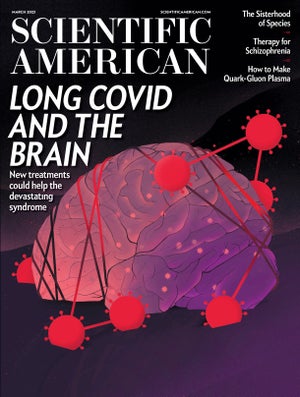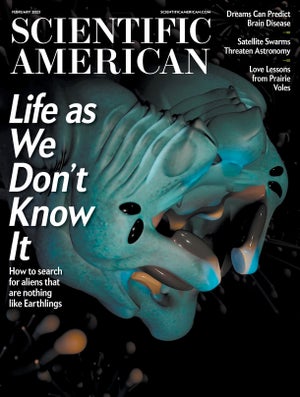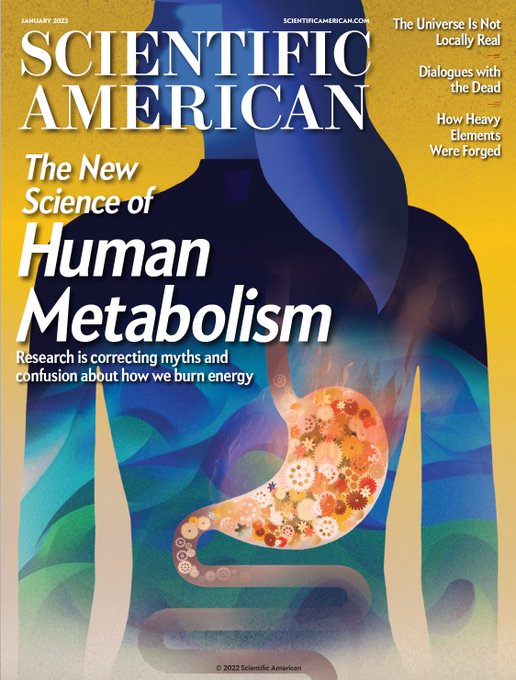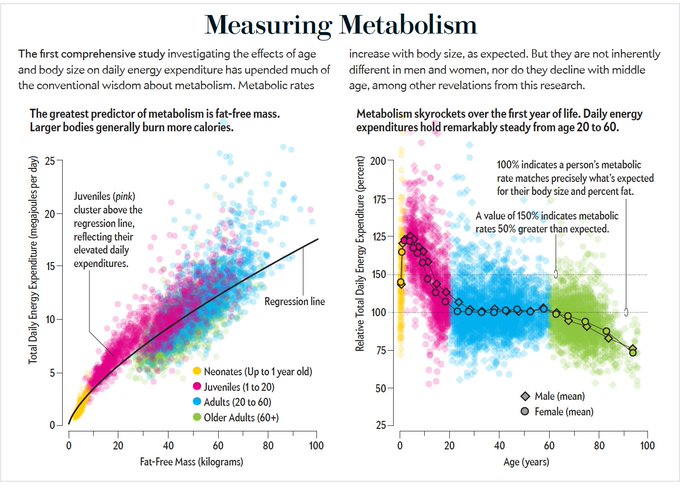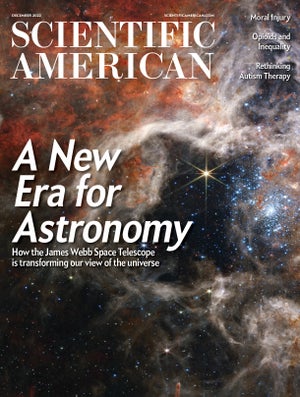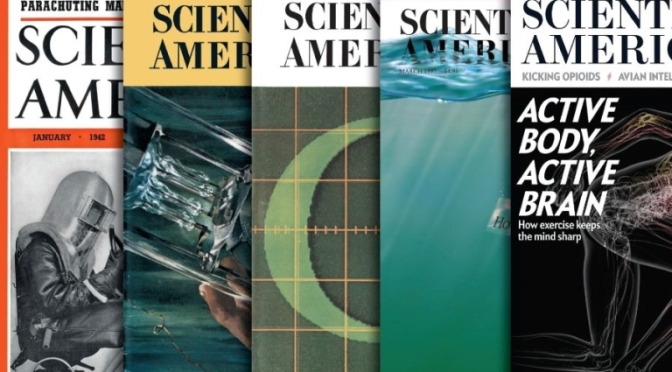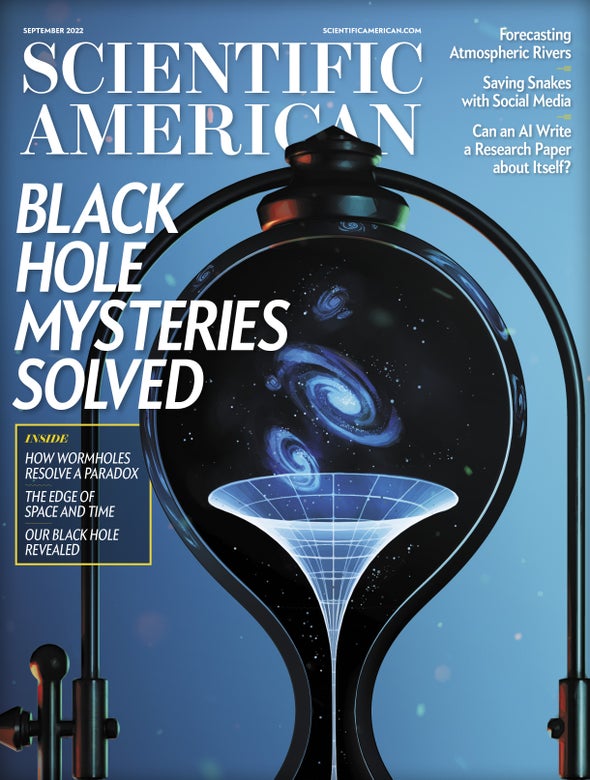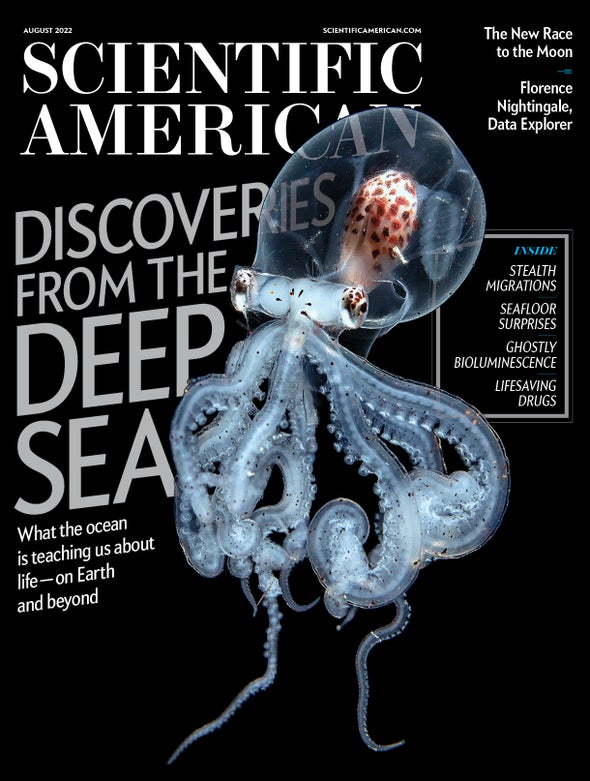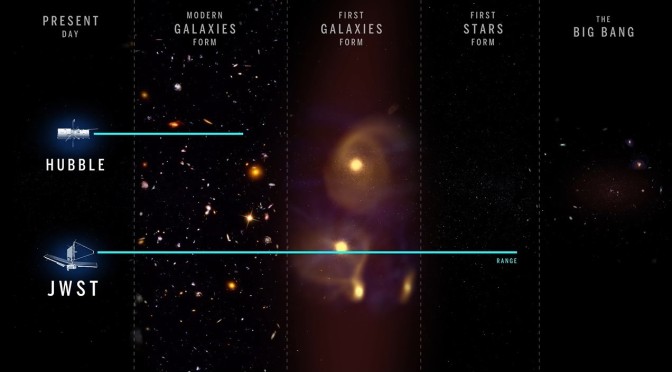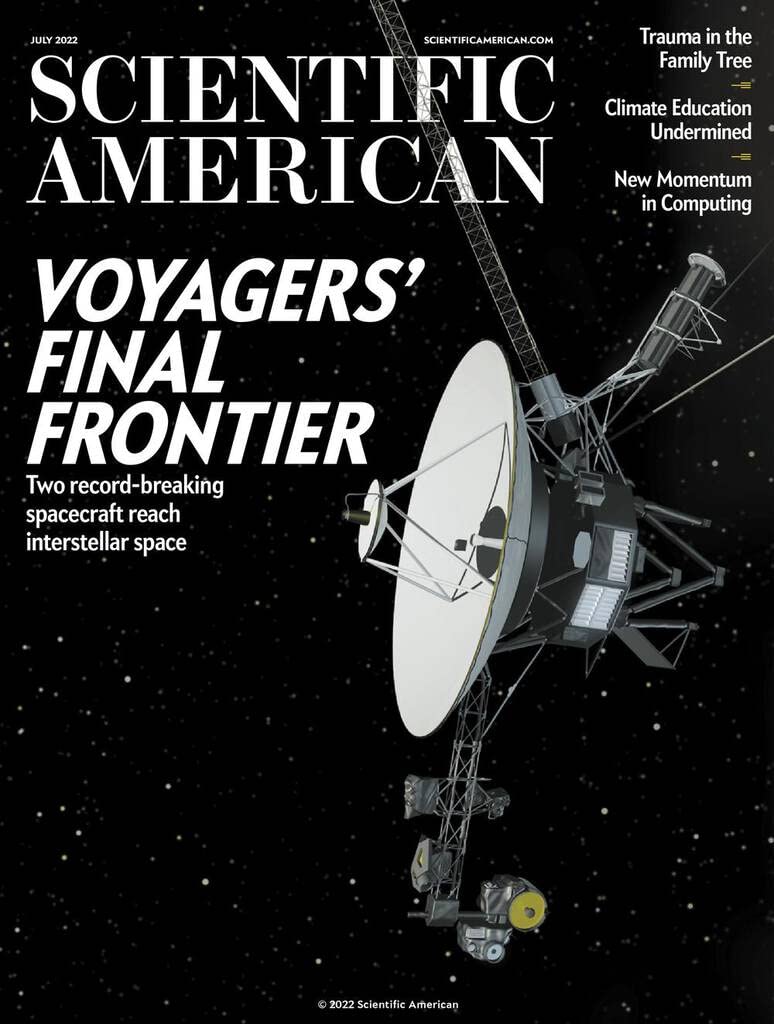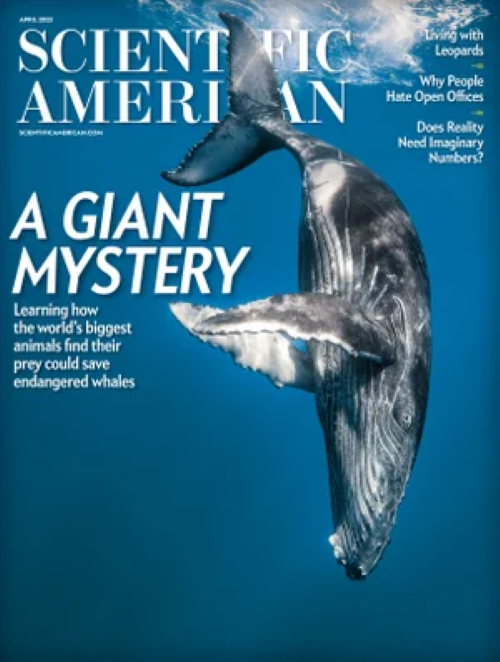
Scientific American – April 2023 Issue:
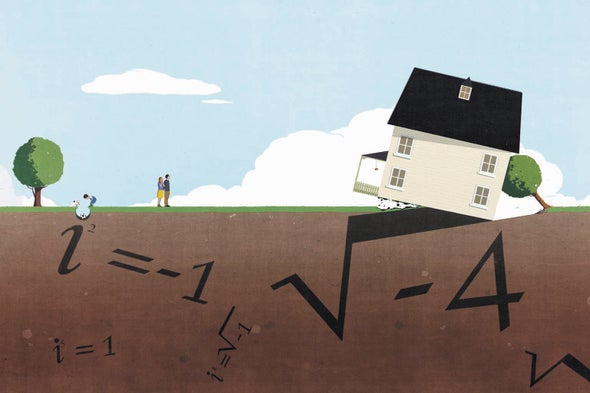
Imaginary numbers—the square roots of negative numbers—are an inescapable part of quantum theory, a study shows
Fixing the Hated Open-Design Office

Open-office designs create productivity and health problems. New insights from Deaf and autistic communities could fix them
No One Knows How the Biggest Animals on Earth—Baleen Whales—Find Their Food
How do giant filter-feeding whales find their tiny prey? The answer could be key to saving endangered species


